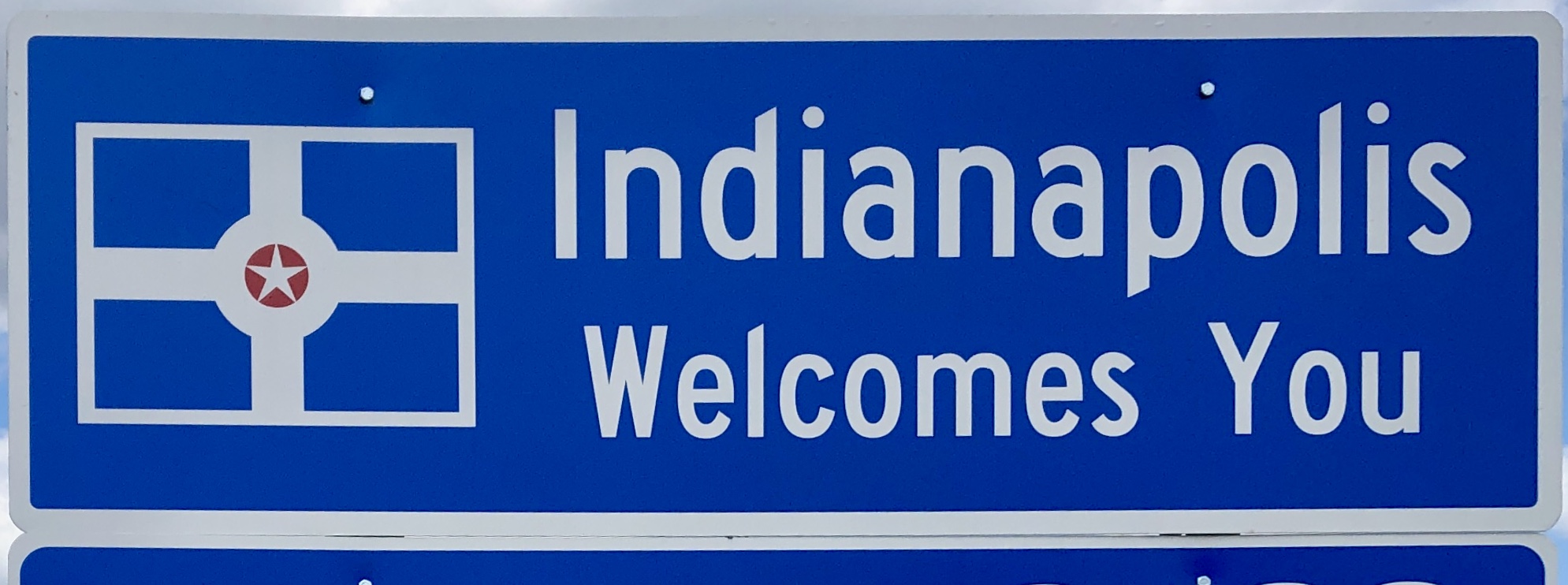|
Flag Of Indianapolis
The flag of Indianapolis has a dark blue field with a white five-pointed star pointing upwards in the center. Around the star is a circular field in red. Surrounding the red field is a white ring, from which extend four white stripes from top to bottom and from hoist to fly, thus creating four equal quadrants in the field. The stripes are about one-seventh the width of the flag, with the white ring the same width as the stripes. The diameter of the red circle is about two-ninths the width of the flag. The current flag design was adopted by the Indianapolis, City of Indianapolis on May 20, 1963. The flag was first raised from the City-County Building (Indianapolis), City–County Building on November 7, 1963. It was designed by Herron School of Art, John Herron Art Institute student Roger E. Gohl. History First and second flag The city's first municipal flag was designed by city council member William Johnson in 1911 and approved by a commission appointed by Mayor Samuel "Lew" Shan ... [...More Info...] [...Related Items...] OR: [Wikipedia] [Google] [Baidu] |
North American Vexillological Association
The North American Vexillological Association (NAVA) is a membership organization devoted to vexillology, the scientific and scholarly study of flags. It was founded in 1967 by American vexillologist Whitney Smith (1940–2016), and others. Its membership of 600+ comprises flag scholars, enthusiasts, designers, collectors, conservators, educators, merchants, manufacturers, historians, and hobbyists. NAVA publishes '' Raven: A Journal of Vexillology,'' an annual peer-reviewed journal and ''Vexillum,'' a quarterly magazine (combining the previous ''Flag Research Quarterly'' and ''NAVA News''). They cover vexillological topics and inter-disciplinary discussion as well as the Association's proceedings and other vexillological news., Its guidebook to flag design, ''"Good" Flag, "Bad" Flag'', articulates the basic principles of vexillography and has influenced flag-design efforts across the U.S. and beyond. It has been translated into Spanish, French, German, Italian, Portuguese, ... [...More Info...] [...Related Items...] OR: [Wikipedia] [Google] [Baidu] |
Meridian Street (Indianapolis)
Meridian Street is the primary north–south street in Indianapolis, Indiana. US 31 formerly ran along North Meridian Street for much of its length in the city of Indianapolis, before being re-routed to a segment of Interstate 465. Meridian Street serves as the axis separating east addresses from west addresses, and intersects Monument Circle and Washington Street in downtown. North of downtown, Meridian continues through several prominent city neighborhoods, such as the Midtown commercial district, the Old Northside, Herron-Morton, Butler–Tarkington, Meridian-Kessler, and Arden, as well as the towns of Meridian Hills and Williams Creek. Meridian Street also passes through several historic districts: the North Meridian Street Historic District, the Old Northside Historic District, the Shortridge–Meridian Street Apartments Historic District, the Washington Street–Monument Circle Historic District, and the Indianapolis Union Station-Wholesale District. In 1919, propert ... [...More Info...] [...Related Items...] OR: [Wikipedia] [Google] [Baidu] |
Government Of Indianapolis
A government is the system or group of people governing an organized community, generally a state. In the case of its broad associative definition, government normally consists of legislature, executive, and judiciary. Government is a means by which organizational policies are enforced, as well as a mechanism for determining policy. In many countries, the government has a kind of constitution, a statement of its governing principles and philosophy. While all types of organizations have governance, the term ''government'' is often used more specifically to refer to the approximately 200 independent national governments and subsidiary organizations. The major types of political systems in the modern era are democracies, monarchies, and authoritarian and totalitarian regimes. Historically prevalent forms of government include monarchy, aristocracy, timocracy, oligarchy, democracy, theocracy, and tyranny. These forms are not always mutually exclusive, and mixed governme ... [...More Info...] [...Related Items...] OR: [Wikipedia] [Google] [Baidu] |
Flags Introduced In 1963
A flag is a piece of fabric (most often rectangular or quadrilateral) with a distinctive design and colours. It is used as a symbol, a signalling device, or for decoration. The term ''flag'' is also used to refer to the graphic design employed, and flags have evolved into a general tool for rudimentary signalling and identification, especially in environments where communication is challenging (such as the maritime environment, where semaphore is used). Many flags fall into groups of similar designs called flag families. The study of flags is known as "vexillology" from the Latin , meaning "flag" or "banner". National flags are patriotic symbols with widely varied interpretations that often include strong military associations because of their original and ongoing use for that purpose. Flags are also used in messaging, advertising, or for decorative purposes. Some military units are called "flags" after their use of flags. A ''flag'' (Arabic: ) is equivalent to a brigade in ... [...More Info...] [...Related Items...] OR: [Wikipedia] [Google] [Baidu] |
Flags Of Cities In Indiana
A flag is a piece of fabric (most often rectangular or quadrilateral) with a distinctive design and colours. It is used as a symbol, a signalling device, or for decoration. The term ''flag'' is also used to refer to the graphic design employed, and flags have evolved into a general tool for rudimentary signalling and identification, especially in environments where communication is challenging (such as the maritime environment, where semaphore is used). Many flags fall into groups of similar designs called flag families. The study of flags is known as "vexillology" from the Latin , meaning "flag" or "banner". National flags are patriotic symbols with widely varied interpretations that often include strong military associations because of their original and ongoing use for that purpose. Flags are also used in messaging, advertising, or for decorative purposes. Some military units are called "flags" after their use of flags. A ''flag'' (Arabic: ) is equivalent to a brigade in ... [...More Info...] [...Related Items...] OR: [Wikipedia] [Google] [Baidu] |



.jpg)